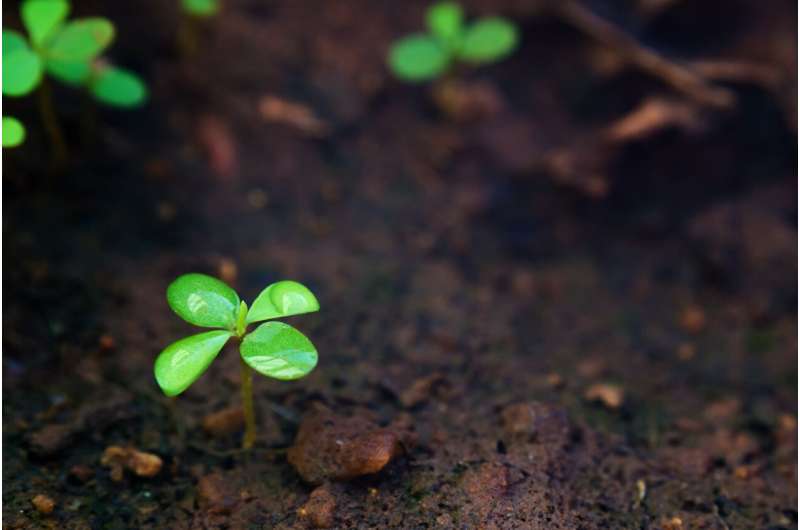Credit: Unsplash/CC0 Public Domain
Previous studies have shown that soil organic carbon (SOC) influences the provision of edaphic ecosystem services, making it a key indicator of soil health under sustainable land use management and for climate change resilience. However, the SOC sequestration processes during tropical forest succession remain unclear, particularly after land abandonment from agriculture practices.
In a study published in the Journal of Ecology, researchers from the Xishuangbanna Tropical Botanical Garden (XTBG) and the Kunming Institute of Botany of the Chinese Academy of Sciences have investigated the effects of plant functional diversity, species diversity, phylogenetic diversity, tree above-ground biomass, and environmental factors on SOC during forest succession following land abandonment from swidden agriculture.
The researchers used data from two large-scale surveys of 320 plots (of 1,000 m2 each) and 1,280 subplots (of 100 m2 each) covering a total landscape area of 20,000 ha in Southeast Asia. They measured SOC stocks during forest succession to infer sequestration via space-time substitution.
They found that functional trait diversity played an important role in determining SOC sequestration across successional trajectories. Plant trait composition was directly associated with plants-to-soil carbon inputs and outputs, reflecting complementary resource use within plant communities and their impact on biogeochemical cycles.
In addition, increases in SOC carbon storage were associated with indirect positive effects of species diversity and succession age via functional trait diversity, but phylogenetic diversity and aboveground biomass showed no significant relationship with SOC stocks.
Furthermore, the effects of soil properties and functional trait diversity on SOC carbon storage shifted with elevation.
"Our study helps to clarify the relationships between different components of plant biodiversity, environmental factors, and soil carbon stocks in natural tropical forest succession, especially after land abandonment by swidden agriculture," said Gbadamassi Dossa, corresponding author of the study.
The researchers suggested that in the mosaic landscape of the tropical region, a trait-based approach in restoration and afforestation management practices should be considered.
More information: Manichanh Satdichanh et al, Drivers of soil organic carbon stock during tropical forest succession, Journal of Ecology (2023). DOI: 10.1111/1365-2745.14141
Journal information: Journal of Ecology
Provided by Chinese Academy of Sciences
























